10 Popular Edible Mushrooms (And How To Cook With Them)
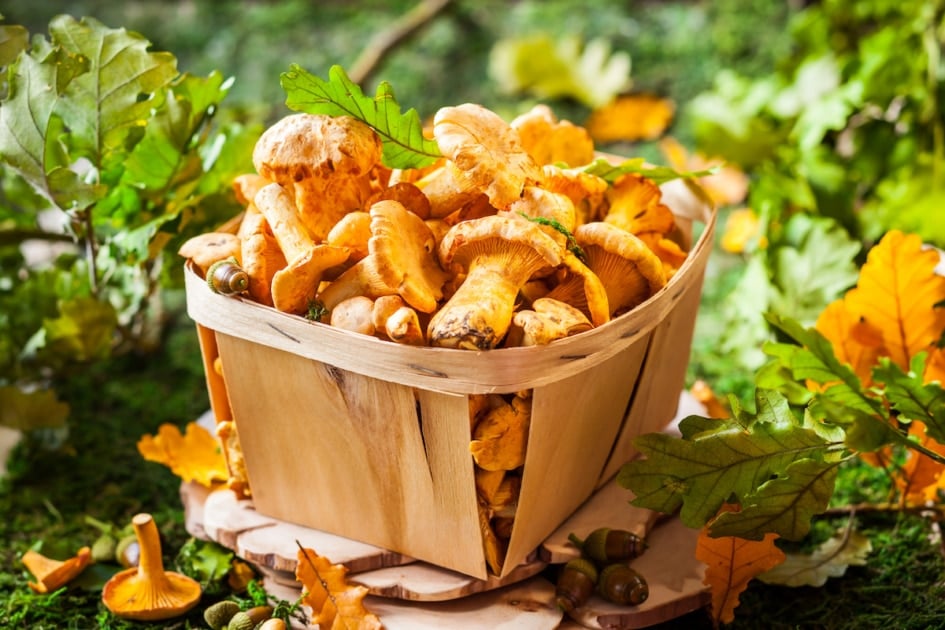
In the fall, as temperatures begin to drop, pumpkins and squash take all the glory, but let’s not forget about edible mushrooms, the ever-versatile bumper crop! While mushrooms can be found year-round, many varieties peak during the fall and winter. And with the average American consuming more than two pounds of edible mushrooms each year, we wanted to take a closer look at the top varieties.
Fun Fact: National Mushroom Day is October 15th each year!
Mushrooms are a staple ingredient in many of your favorite recipes across a variety of cultures. Out of approximately 14,000 known species of mushrooms, some are used for medicinal purposes, some can send you on a psychedelic journey, while others are delicious, healthy and edible additions to various cuisine. Even though mushrooms are grouped into the produce section at the grocery store, they technically aren’t plants. Mushrooms belong to the fungi kingdom and make their food by metabolizing dead or decaying matter. They reproduce by producing spores rather than seeds. Weird fact: mushrooms are actually more closely related in DNA to humans than to plants!
Edible Mushrooms – A Powerhouse of Nutrition
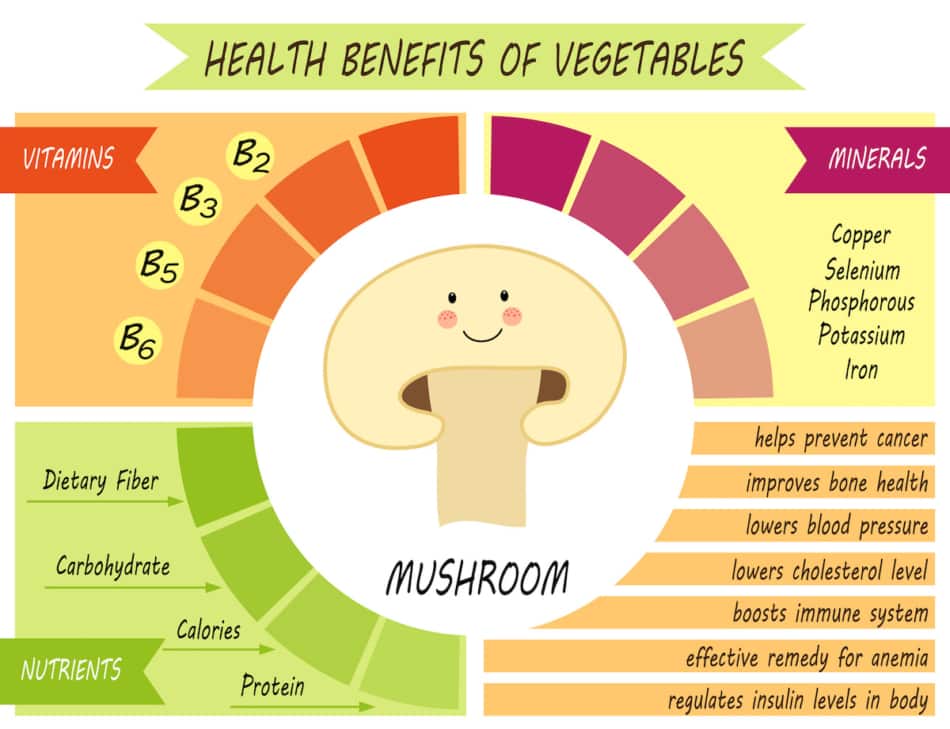
Edible Mushrooms pack a nutritional punch, making them a healthy addition to any diet. They’re high in fiber and low in fat and carbohydrates, while also being a significant source of vitamins A, C, B6, B12, and selenium. The Mushroom Council reminds us of this very unusual fact: mushrooms are the only veggie in the produce aisle that contains vitamin D!
Medicinal mushrooms have been used in Eastern medicine for thousands of years and are gaining popularity in other parts of the world. Often found in powder form, they can easily be added to smoothies, coffees, soups, etc. Different mushrooms have distinct health advantages: brain boosters, hormone balancers, antioxidant powerhouses, stress relievers, immune and energy boosters.
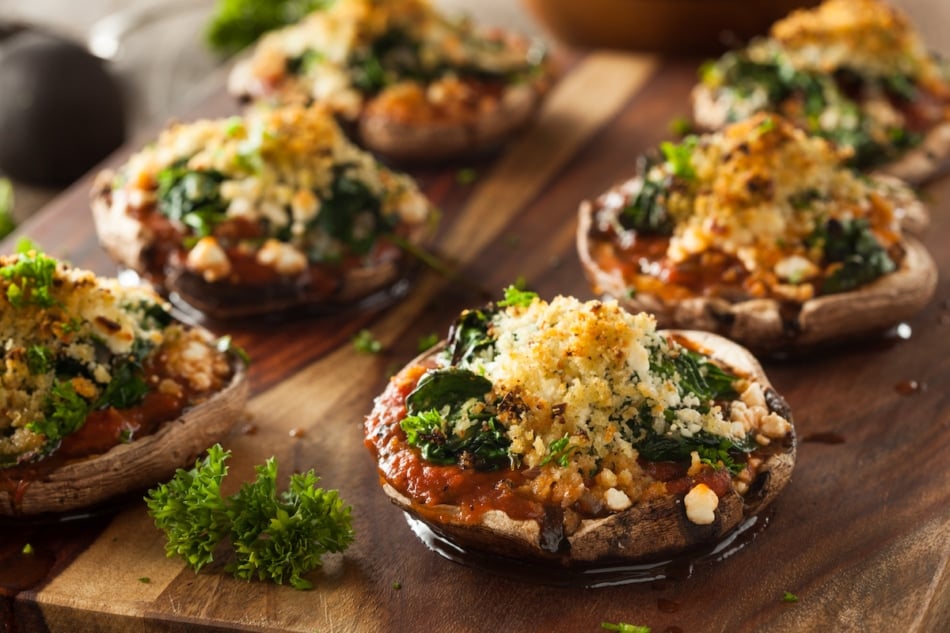
Long gone are the days where the lone button mushroom was the only grocery store mushroom variety available. While you can go foraging (safely!) for edible mushrooms, such as morels, or cultivate your own, you won’t need to look any further than your produce aisle for many varieties—from sweet to nutty-tasting, some even resemble the taste of lobster! Their versatility and meat-like texture (hello, portobello!) make them a popular culinary staple. Even the strangest-looking fungi—and they can get weird-looking—make a surprising and tasty addition to many meals.
Top 10 Mushroom Varieties To Try
Check out this list for a quick run-down of the more common edible mushrooms and how to include them in your cooking.
1. Button (White)
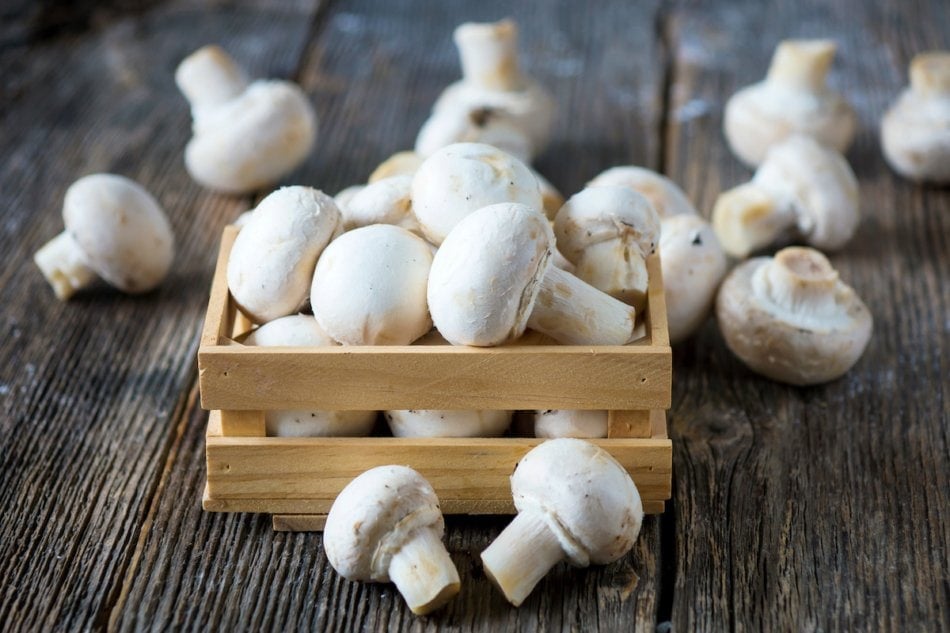
Ninety percent of mushrooms eaten are of this variety, and can easily be found at your local grocery store. With less culinary flair than the more exotic-looking mushrooms on the market, the simple button mushroom is anything but boring. This mild-tasting variety is easy to cook and adapts to the flavors of any dish. They can be eaten raw or cooked and are a popular addition to soups, stir-frys, salad, and or topped on pizzas. The easiest way to cook them is to simply saute them with a little oil.
Also called: table mushroom, common mushroom, white mushroom, or champignon de Paris.
2. Cremini (Italian Brown)
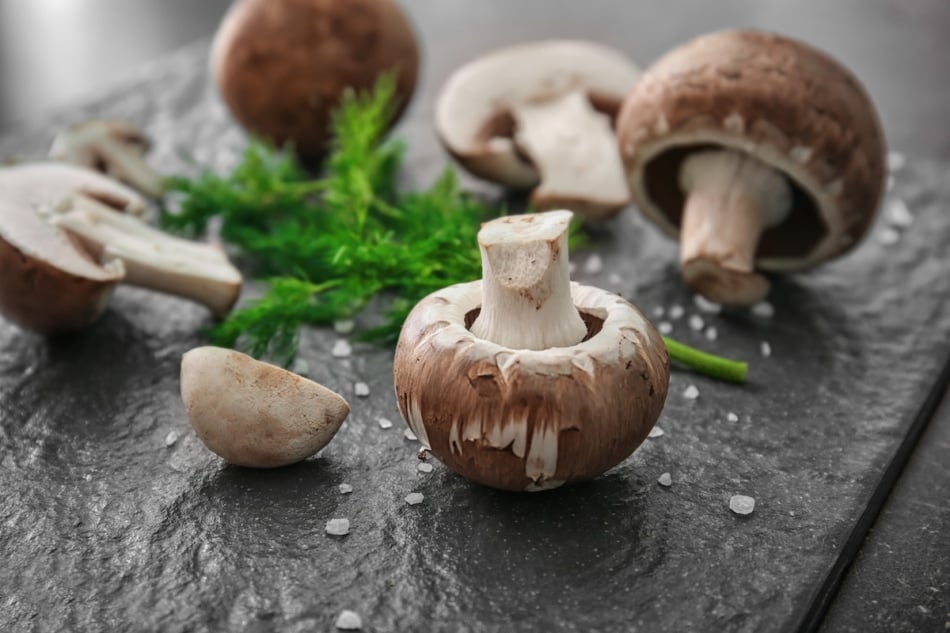
Cremini mushrooms are the brown strain cousin to the white button mushroom, just with darker, firmer, and more flavorful flesh of the white button mushroom. They are simply baby portobellos. While they have a more complex taste than the white button, the two mushrooms can be used interchangeably, and both are often widely used in savory and spicy dishes.
Also called: Italian mushroom, brown mushroom, baby portobello, or baby bella.
3. Portobello
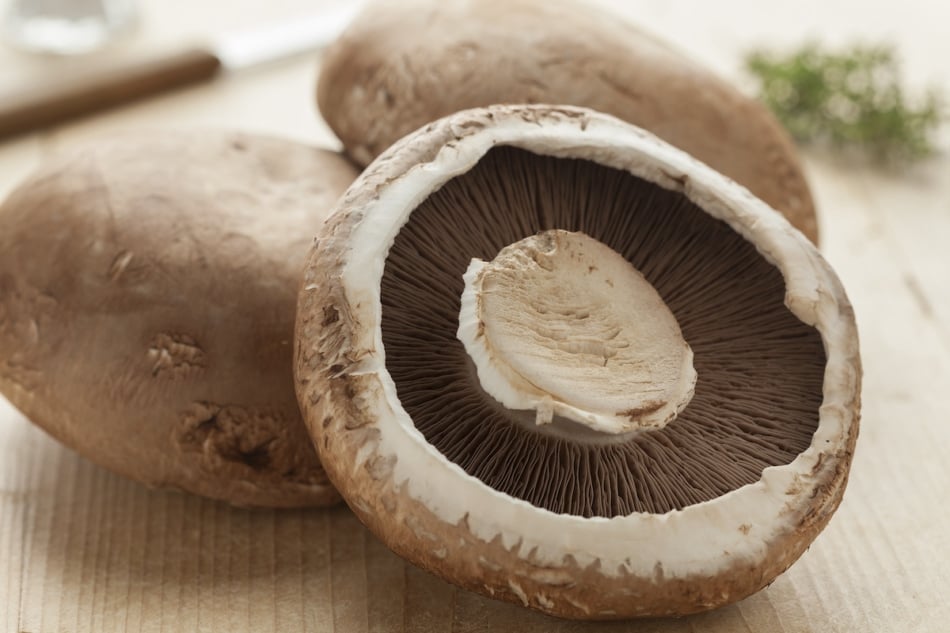
The portobello mushroom is basically just a fully mature cremini. These dense and rich mushrooms are a staple in Italian cooking and their texture and taste make portobello an excellent meat replacement. Want a low-carb bread option? Portobello’s flat caps work well for a bun substitute. Their meaty texture also holds up well for grilling and stuffing.
Also called: portabello, portabella, Roman mushroom, field mushroom, or cappaellone.
4. Shiitake (Forest or Oak)
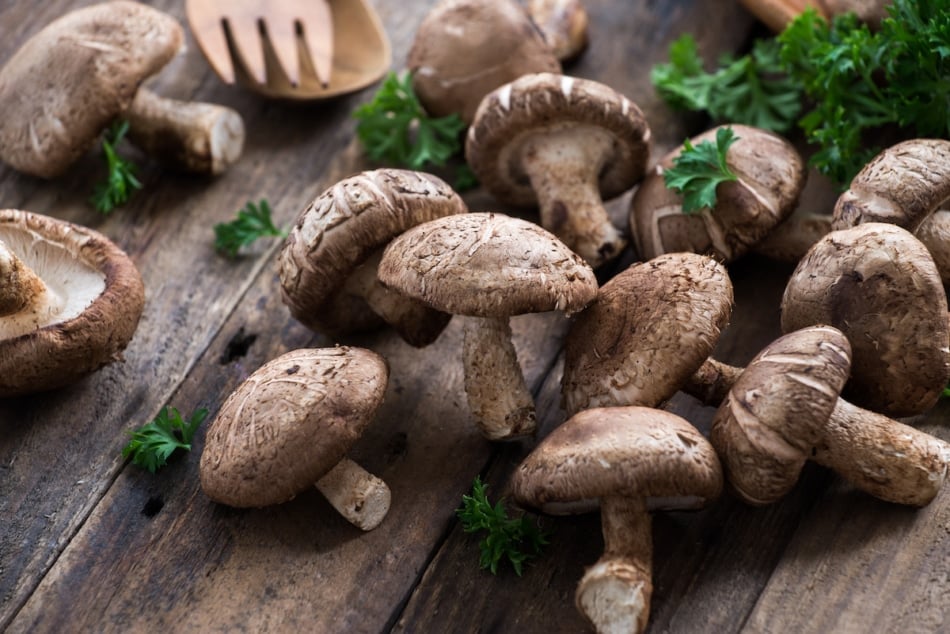
Shiitake mushrooms are native to East Asia, with 83% of them grown in Japan. In Japanese, shiitake means “oak fungus” where they can be found. They don an umbrella-shaped brown cap, which curl under slightly. Fresh shiitakes have a light woodsy flavor and aroma, while their dried version has a more intense umami flavor (the fifth taste, which is described as savory or meaty). You can cook with both fresh and dried shitake, however, the dried ones are more widely used. Shiitake mushrooms are low in calories, while also offering many vitamins, minerals, and health-promoting compounds to protect against cancer and inflammation and to boost your immune system. They have long been used in traditional Eastern medicine for boosting health and longevity.
Shiitake mushrooms’ distinct umami flavor is a great addition to vegetarian dishes. Often sold dried, they simply need to be soaked in hot water to soften before cooking. Saute shiitakes with greens and serve with a poached egg; add them to pasta dishes or stir-fries; make a flavorful soup, or roast them up for a crispy snack.
Also called: black forest, black winter, brown oak, Chinese black.
5. Oyster
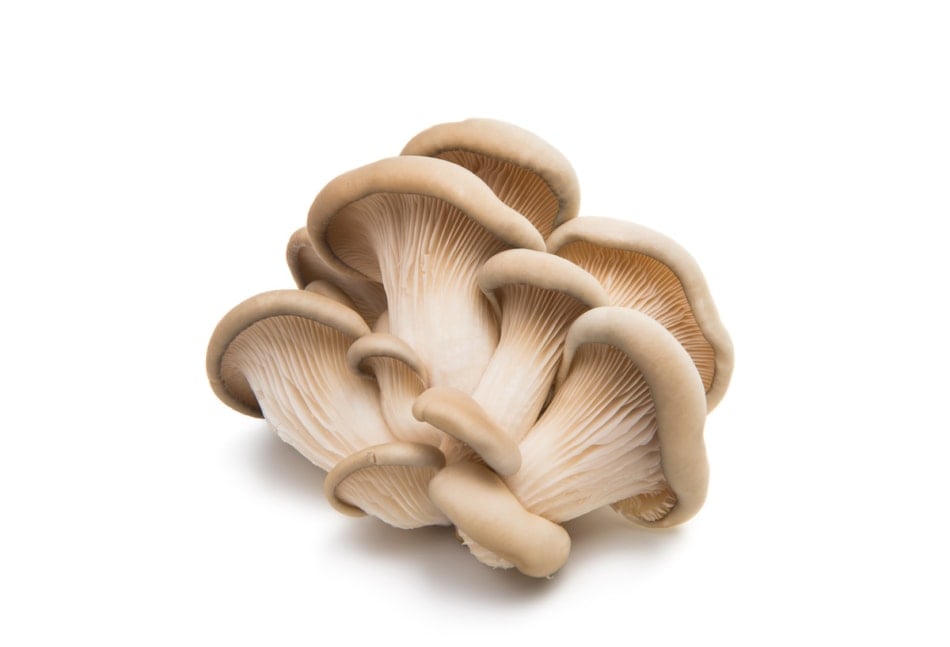
Oyster mushrooms can be found growing on the sides of trees in the wild, however, most of these whitish and thin, fan-shaped mushrooms that you find in stores or on menus are most likely cultivated. First cultivated during World War I as a ration food, Oyster mushrooms carry a delicate aroma and subtle, savory anise flavor and are prized in many Japanese and Chinese dishes, such as soups, sauces, and stir-fries. More expensive than white button mushrooms, but less so than rarer mushrooms, such as morels, oysters require little prep work and can be eaten whole or chopped. While they can be eaten raw, cooking oyster mushrooms brings out their delicate flavor and gives it a unique velvety texture, making them the perfect addition to any barbeque (they are delicious marinated, and grilled).
Also called, tree oyster, angel’s wings, and abalone mushroom.
6. Porcini
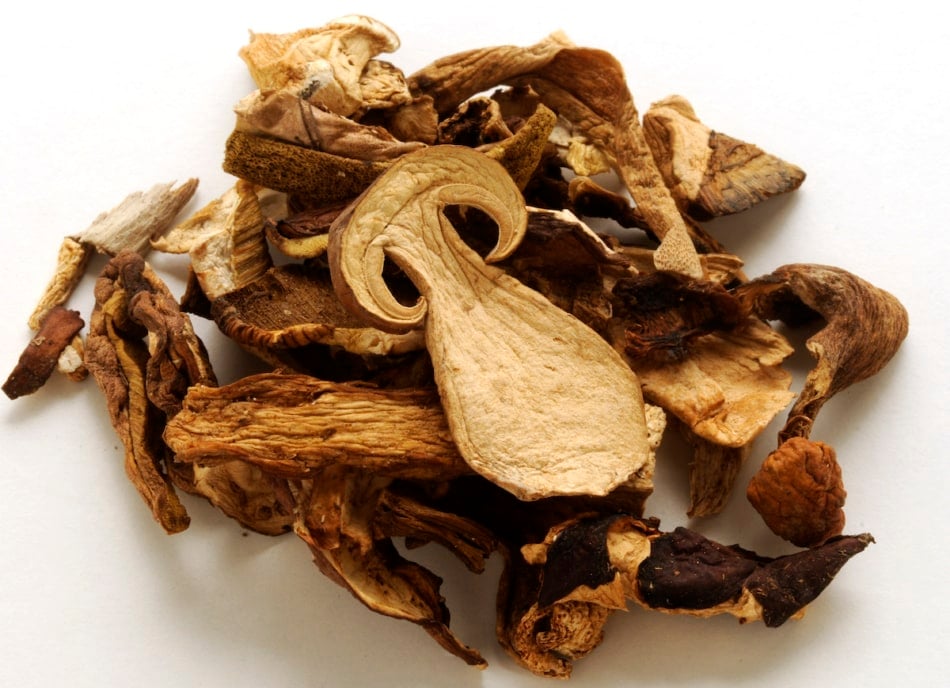
One of the most prized mushrooms, porcini mushrooms are desired for their smooth texture and aromatic, woodsy flavor. They’re widely used in Italy and France and are referred to as cepes. Fresh porcini are beloved by gourmet chefs and are often sautéed and served as a side dish or added to risottos and pasta dishes. Fresh varieties are harder to come by in the United States, but dried ones can be restored by soaking them in hot water. Dried porcinis add rich flavor to broths and stews.
Also called: cepe, bolete, king bolete, Borowik, Polish mushroom.
7. Morel
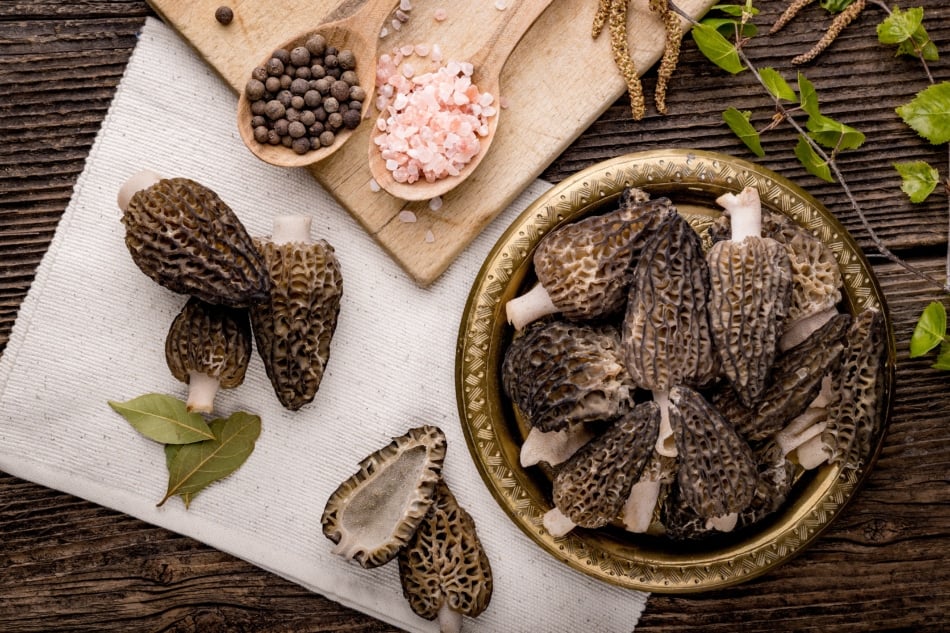
One of the most prized edible mushrooms in the world, the morel’s honeycomb-shaped cap is distinct in appearance. Morel mushrooms are difficult to cultivate, so most morels served up in restaurants are harvested in the springtime from the wild—creating a multi-million dollar enterprise. Their rich flavor complements a wide range of dishes, and can often be found alongside meats or stuffed inside ravioli. This is one mushroom species that can’t be eaten raw—it needs to be cooked to neutralize its naturally occurring toxins. Read how to spot their poisonous lookalikes!
Also called: morchella.
8. Enoki (Snow Puff)
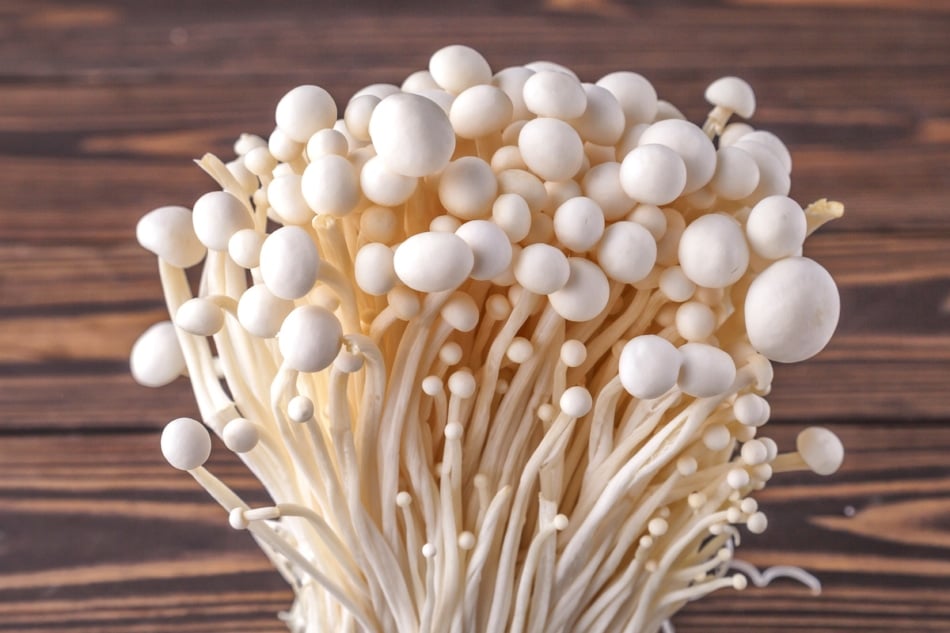
Enoki mushrooms feature distinct small, shiny white caps attached to thin stems. The wild types tend to be darker and shorter than their cultivated counterparts. Their crunch makes them a good raw option to top on salads. This species also cooks up well, making them a great addition to sauces, stir-fries, and soups.
Also called: Enokitake, futu, winter mushrooms, and winter fungus.
9. Chanterelle (Girolle)
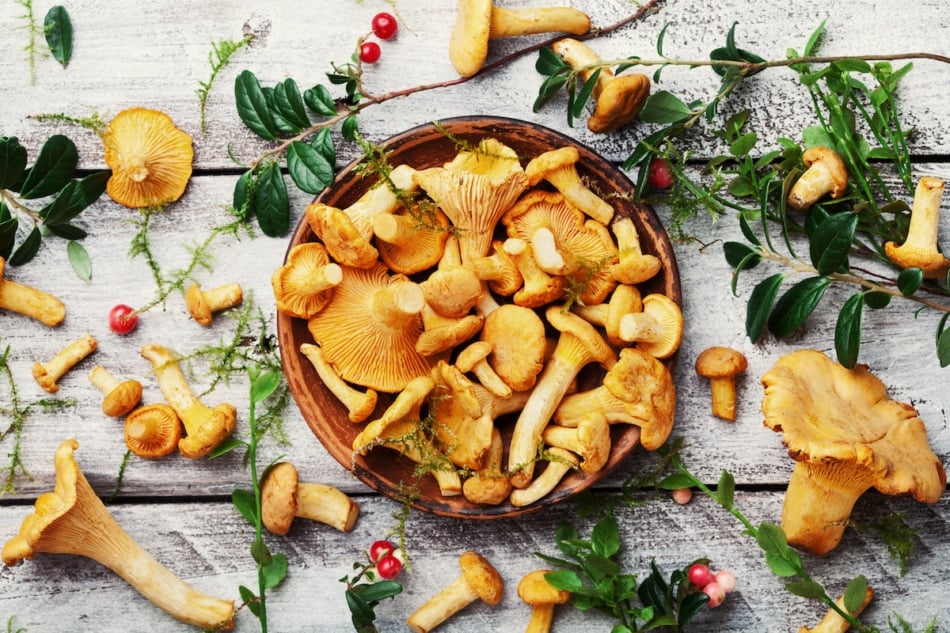
This flashy yellow, trumpet-shaped mushroom is known for its unique peppery and fruity flavor. The chanterelle is difficult to cultivate, making it one of the most popular mushrooms picked in the wild. Considered a higher delicacy mushroom, cooking this fungus with fat, such as butter and cream, draws out its rich flavor, making it a great addition to sauces, soups, and soufflés.
Also called: Egg mushroom, Golden or yellow chanterelle, pfifferling.
10. Maitake
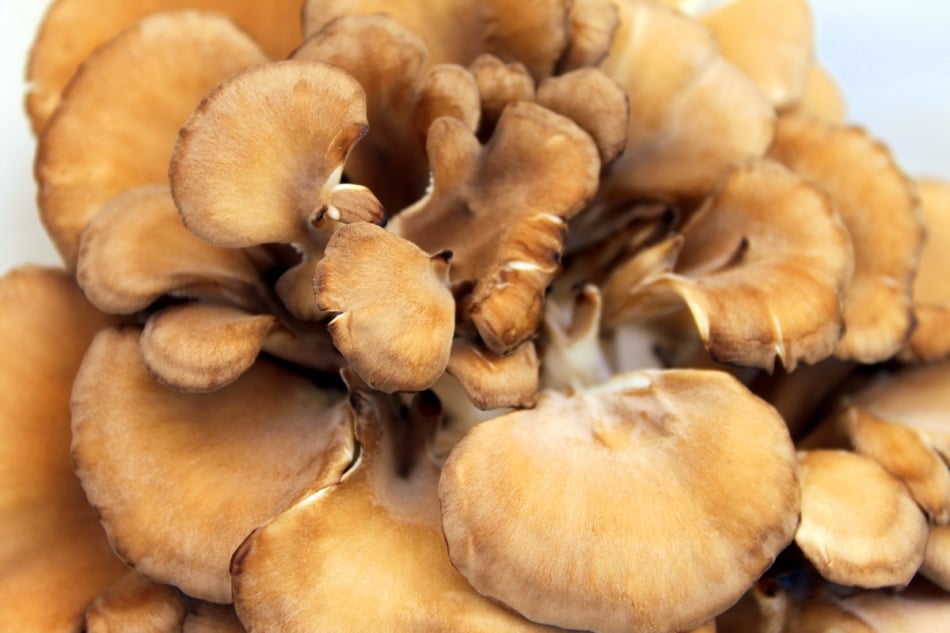
Resembling a head of cabbage with delicate, feathered edges, the maitake mushroom can be cultivated or found in the wild. The maitake mushroom grows at the base of trees and is native to North America, Europe, and China. It has been consumed for centuries in China and Japan; maitake means “dancing mushroom” in Japanese. Maitake can be found in-store or farmer’s markets in overlapping clusters, resembling a bird’s plumage. Thanks to its bird-like appearance, it is known as “hen-of-the-woods.” This earthy, peppery flavored mushroom is best served cooked with savory and salty flavors. Delicious in soups, stews, pasta dishes, ramen, sauces, and saute. It can also be found in a dietary form for your regular health regimen.
Also called: Hen-of-the-Wood, sheepshead mushroom, ram’s head, dancing mushroom.
Selecting Mushrooms
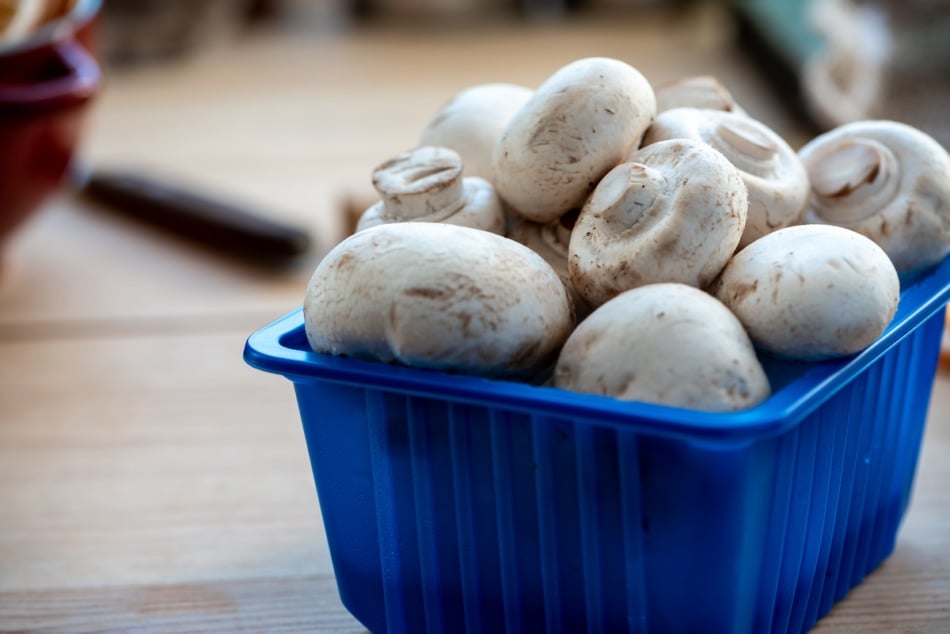
Whether foraging or purchasing cultivated mushrooms, select mushrooms that are firm, with a smooth appearance, void of any noticeable soft spots. The surface should be dry, but not dried out, and never moist or slimy. Once you get your mushrooms home, gently remove any excess dirt before storing but don’t wash them until you’re ready to eat them. And always rinse them whole, before slicing, as the exposed flesh will absorb water like a sponge.
Storing Mushrooms
Due to mushrooms’ high moisture content, they are very perishable. Store them in a container with good airflow to maximize air circulation without drying out the mushrooms. Wrap mushrooms in a paper towel and place them in an opened plastic or paper bag. Mushrooms should last in the fridge for a few days if properly stored. They can also be frozen or dried to increase shelf life.
Which Is Your Favorite Mushroom?
Which is your favorite? Not a fan? Tell us in the comments below!

Natalie LaVolpe
Natalie LaVolpe is a freelance writer and former special education teacher. She is dedicated to healthy living through body and mind. She currently resides on Long Island, New York, with her husband, children, and dog.



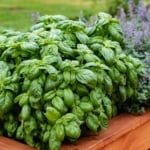
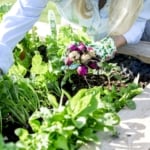
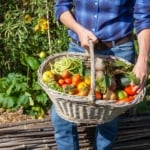
Love them all. Oyster and Lions mane are high on my favorites list but it changes. Simple is best when it comes to cooking them. Olive oil, garlic, salt. Press to brown. 3 minutes on each side on med. high heat.
Do not eat them raw!
Keep seeing articles telling people it’s okay to eat mushrooms raw not really they’re not digested like that at all they’re just going to go right through you if you eat them raw. Also it’s unfortunate that button mushrooms, crimini, Portobello really aren’t that good for you. So why articles suggest people continue with these type of mushrooms is beyond me.
its very simple…
white mushrooms are the best and the easiest to prepare
simply melt two sticks of butter over medium low heat and add the mushrooms
set the heat to medium and bring to a boil
boil gently for about 15 minutes, strain and serve
yummy!!!
Love morels in everything, any stir fry veggie dish, soup and stuffed with crab and cheese. Also chanterelles in sauses and scrambled eggs soup. I’m just getting into different one, like the red lobster and black trumpet but have not ordered them yet. Lots of different ones on eBay. All the above come dried and easily rehydrated and turn out as good as fresh and cheaper because while you can find wild fresh too, the shipping and packing is crazy high! I get a few wild morels at our lake house and some boletes in the yard at home but am older and physically unable to hike around the woods anymore! But love the dried ones …………..oh and dried and powdered porcinis in the “ magic mushroom “ spice mix you can find on google!
Mushrooms offer a world of culinary possibilities, and knowing how to cook with them opens up endless flavors. Whether sautéing delicate shiitakes for a hearty pasta or grilling meaty portobellos for a satisfying burger, these versatile fungi add depth and umami to any dish. From soups to stir-fries, embrace the earthy charm of edible mushrooms and let your culinary creativity bloom!
Fresh sliced Shiitake mushroom caps with fresh green beans and garlic and a pinch of TRUFF truffle salt.
I absolutely love king trumpet mushrooms when cut thin and glazed with butter and soy sauce. ?
What about red mushrooms?
Thanks for this interesting article. We love morels.
I love love love mushrooms. Sautéed fried steamed
I also like mushrooms very much! : – )